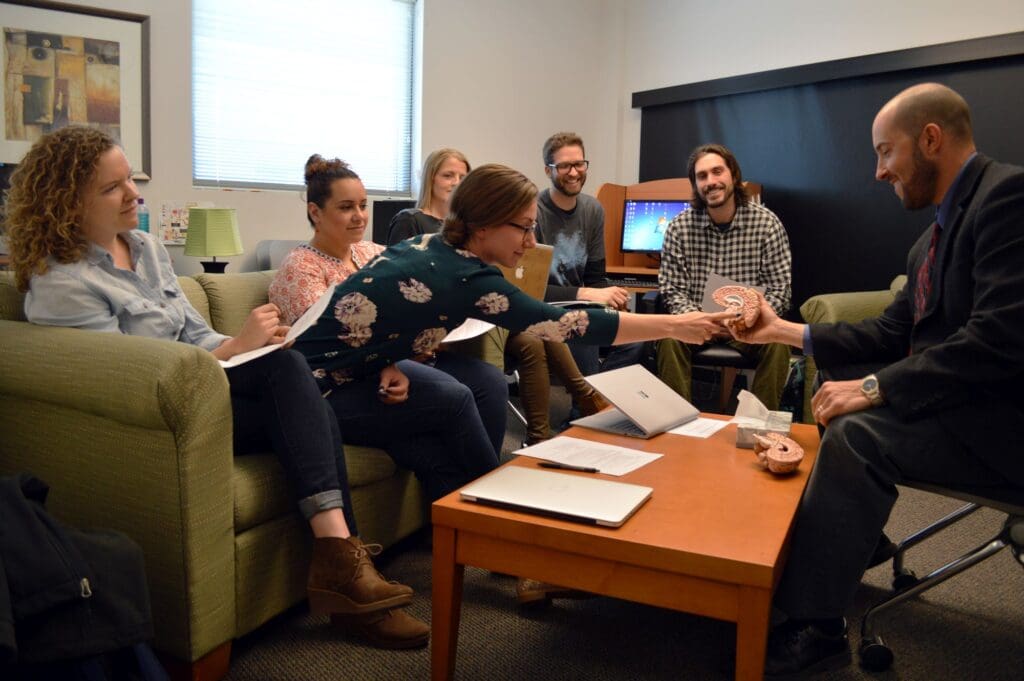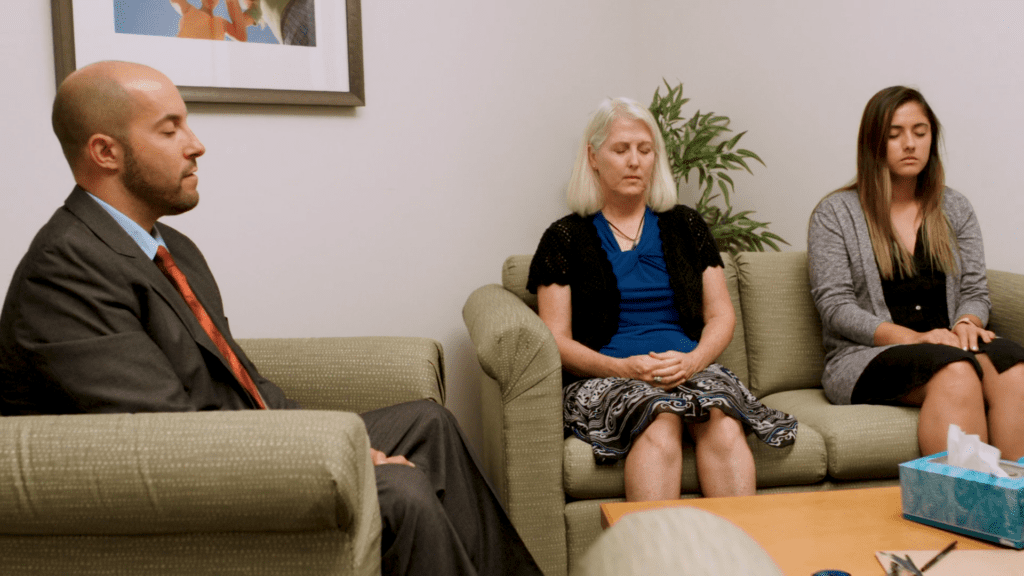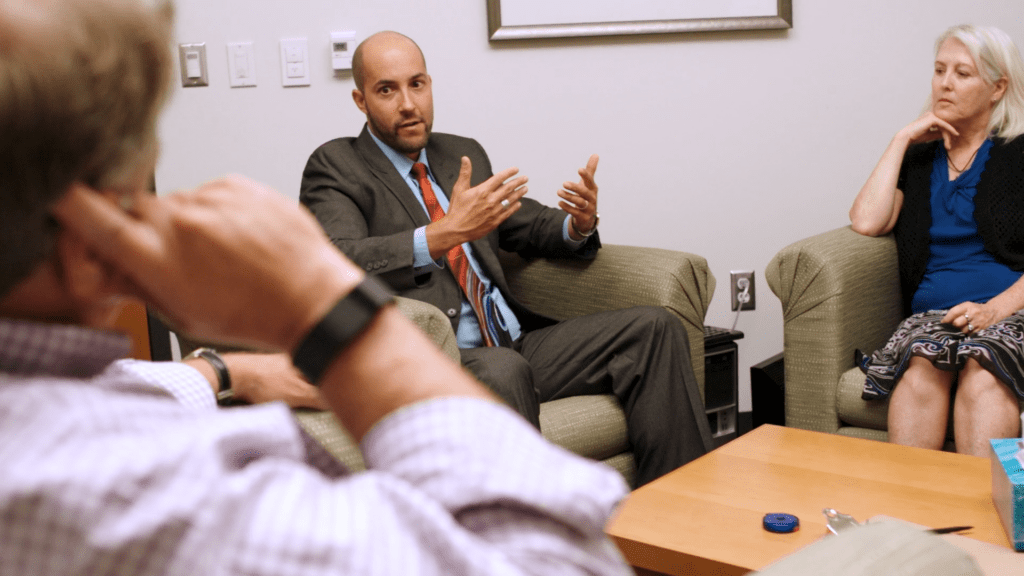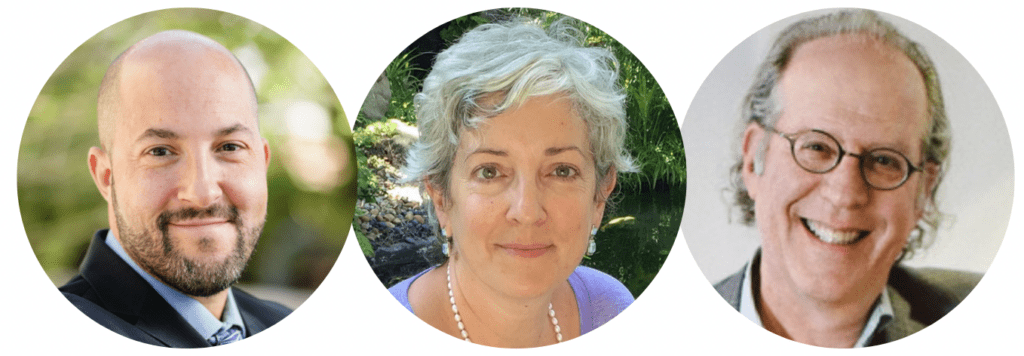
There’s growing concern that the COVID-19 pandemic is exacerbating another ongoing epidemic: the opioid crisis. Recent reports point to an increase in fatal overdoses in the United States since the pandemic began.
Could mindfulness-based approaches offer long-term relief for those grappling with chronic pain and addiction? Dr. Eric Garland, Director of the Center on Mindfulness and Integrative Health Intervention Development (C-MIIND) at the University of Utah, has spent 12 years on a quest to find out.
Eric’s pioneering research has resulted in Mindfulness-Oriented Recovery Enhancement (MORE), an eight-week program that combines mindfulness meditation, cognitive-behavioral therapy, and positive psychology to help individuals struggling with addiction, chronic pain, emotion dysregulation, and more. Among its benefits, the program uses the power of the mind to help individuals refocus their attention—away from destructive habitual behaviors that can negatively impact their health—to positive rewards such as appreciating the beauty found in nature.
Eric refers to Mind & Life as ‘catalytic’ in his journey to develop MORE and the evidence base to back it up. “It was a life-changing experience,” he says of his participation in Mind & Life’s 2007 Summer Research Institute. “I was surrounded by a group of peers doing similar research in an area that I didn’t even know was a legitimate scientific pursuit.” Not long afterward, he received a Francisco J. Varela Research Grant to further his doctoral dissertation to develop and test MORE as a treatment for alcohol dependence.
The grant was the first of many that have enabled Eric to refine and expand MORE’s contemplative approach to help those struggling with addiction. To date, Eric and collaborators have received over $50 million from the National Institutes of Health, the US Department of Defense, Patient-Centered Outcomes Research Institute, and others. Among those who have benefited from MORE are military veterans, nearly a fifth of whom misuse opioids in dealing with chronic pain.
Early in his research career, Eric could see a clear link between mindfulness and the treatment of addiction. “Addiction is an automatic habit,” he says. “People learn to become addicted just like they learn how to tie their shoe or ride a bike.” As the habit becomes more ingrained, you become less conscious of it, he adds. Mindfulness made sense as a treatment because it increases conscious awareness over automatic habits.
After accepting a position as assistant professor at Florida State University in 2010, Eric began applying MORE as a treatment for opioid misuse among people experiencing chronic pain. Mindfulness, he theorized, could be used to help such individuals distinguish between the physical sensation of pain and the emotions they attached to it. “The more people could perceive their pain—not as this emotionally-anguishing thing—but rather as an innocuous sensation, be it burning, tightening, or tingling, the greater pain relief they achieved,” he explains.
Another milestone in MORE’s evolution came with incorporating the concept of savoring, a process by which a person focuses mindful awareness on an experience of joy or beauty in the present moment. To test the effects of savoring, Eric brought opioid misusing chronic pain patients into his lab, and measured their heart rate and EEG while they viewed positive images—a sweeping landscape, a smiling baby, an affectionate animal. In a recent paper published in Science Advances, he found that through the savoring techniques taught in MORE, patient’s brains became more sensitive to natural pleasure and less reactive to drug-related cues.
“MORE was helping people to become more physiologically sensitive to nature pleasure,” says Eric, thereby reducing their craving for drug relief. “The more natural joy they experienced, the greater the change in their addictive behavior.”
“The more natural joy and pleasure people experienced,
the greater the change in their addictive behavior.”
Eric traces the roots of his interest in contemplative science to his own mindfulness practice beginning in college, and particularly, the experience of self-transcendence he achieved at key moments in his life. “Recognizing interconnectedness, interdependence, or ‘oneness,’ is what led me to do this work to begin with,” he says. “It’s why I became a therapist, why I personally practice mindfulness meditation, and what’s motivated much of my life.”
Eric’s latest work centers on exactly this—the mind’s ability to transcend the self and experience a profound sense of interconnectedness. His team has developed a tool called the Non-dual Awareness Dimensional Assessment (NADA) to measure the extent to which people participating in mindfulness interventions experience their sense of being an isolated self fading during meditation—and then experience a sense of unity with the world around them.
A recent randomized controlled trial found that MORE significantly increased reported instances of self-transcendence, a sense of oneness with the world, and the experience of affective bliss. These experiences were associated with reduced pain and opioid misuse. Another study, just published in Neuropsychopharmacology, demonstrated that self-transcendent states produced by MORE were linked with increased theta oscillations in the brain that predicted decreased opioid use among Veterans. “To the extent that increasing self-transcendence helps people recover from pain and addiction, this has important clinical consequences,” Eric explains.
That said, there’s no guarantee that self-transcendent experiences will arise from contemplative practice. “All we can do is set the conditions that will make it more likely that a person may have these sorts of experiences,” says Eric. Such conditions, he points out, include overall receptivity to the idea, a dedication to contemplative practice, and an open-heartedness that only comes when you are willing to set your ego aside.
Reflecting on his professional journey, Eric now views the treatment of pain and addiction along a continuum—from mindfulness to meaning. MORE begins by cultivating joy in everyday life and appreciation of those who care about you. Next comes finding a sense of meaning in challenging circumstances and identifying larger life lessons and the satisfaction that can come through helping others. “The final arc on this pathway leads to self-transcendence,” he says, “and realizing you are deeply connected to the world around you.”
As for next steps, Eric seeks to mainstream the use of mindfulness as a complementary treatment for pain and opioid misuse within the healthcare system. While patients experiencing severe pain will likely still need prescription drug relief, mindfulness techniques can lessen their reliance on opioids, he says.
To that end, Eric recently concluded a multi-year trial funded by the National Institute on Drug Abuse that demonstrated the efficacy of MORE delivered in doctor’s offices in primary care settings. Based on the results, he’s looking to scale the training of clinicians who can deliver MORE. He also wants to ensure equitable access by having MORE therapy covered through health insurance.
Just as he was supported through Mind & Life, Eric hopes to engage aspiring researchers in this next phase of his work. “It’s taken me 12 years to develop this intervention and demonstrate its efficacy,” he says. “I look forward to collaborating with emerging scholars, scientists, and clinicians to help more people access the healing power that lies in the mind.”

Eric Garland, PhD, LCSW
University of Utah




